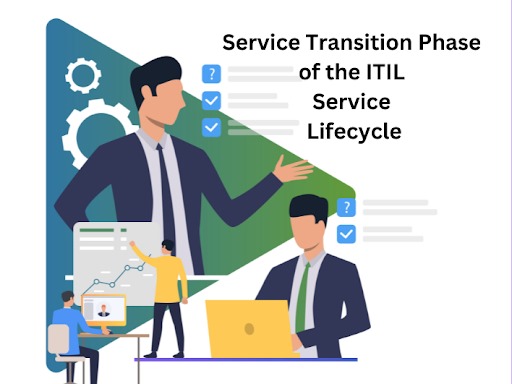The IT Infrastructure Library (ITIL) framework stands as a cornerstone in IT service management, offering a structured approach to managing IT services that align with business needs.
Among its various phases, the Service Transition phase plays a pivotal role in ensuring the seamless movement of services from the development stage to operational deployment.
This blog delves into the intricacies of the Service Transition phase, highlighting its importance, objectives, processes, and how ITIL Training can empower professionals to manage this phase effectively.
Whether you are a seasoned ITIL Service Management professional or new to the field, understanding the Service Transition phase is crucial for delivering services that meet and exceed customer expectations.
Understanding the ITIL Service Lifecycle
Before we dive into the Service Transition phase, it’s essential to grasp the ITIL Service Lifecycle’s broader context.
This lifecycle is segmented into five stages: Service Strategy, Service Design, Service Transition, Service Operation, and Continual Service Improvement.
Each stage is interconnected, ensuring that IT services are aligned with the business’s changing needs and delivering value efficiently and effectively.
The Service Transition phase between Service Design and Service Operation acts as the bridge that ensures services are transferred smoothly and sustainably into the operational environment.
The Importance of Service Transition
The Service Transition phase is critical for multiple reasons. It ensures that new or changed services are deployed in a controlled manner, minimising the risk of disruptions to existing services and the business operations they support.
This phase also ensures that all service changes are tested, validated, and documented, guaranteeing that the services can be operated, maintained, and improved over their lifecycle.
Objectives of Service Transition
The primary objectives of the Service Transition phase include:
- Controlled Implementation of Services: Ensuring that changes to services and service management processes are planned, authorised, and predictable.
- Risk Management: Identifying and managing risks associated with new or changed services.
- Knowledge Management: Ensuring that necessary information is available to support the operation and improvement of services.
- Value Realisation: Ensuring that changes are delivered in a way that enables the business to achieve the intended value.
Key Processes in Service Transition
The Service Transition phase encompasses several key processes, each critical to its success:
Change Management:
This process ensures that all changes are assessed, approved, implemented, and reviewed in a controlled manner.
Service Asset and Configuration Management:
It involves maintaining information about Configuration Items (CIs) required to deliver IT services, including their relationships.
Release and Deployment Management:
This process plans, schedules, and controls the movement of releases to test and live environments, ensuring the integrity of the live environment is protected and that the correct components are released.
Knowledge Management:
Aimed at gathering, analysing, storing, and sharing knowledge and information within an organisation, this process supports other processes by allowing decisions to be made based on reliable information.
Service Validation and Testing:
Ensures that deployed releases and the resulting services meet customer expectations and verifies that IT operations can support the new service.
Change Evaluation:
This process assesses major changes, such as new IT services, updates, and service retirement, before they can proceed to the next phase in their lifecycle.
The Role of ITIL Training in Service Transition
ITIL training plays a vital role in equipping IT professionals with the knowledge and skills required to manage the Service Transition phase effectively.
Through comprehensive training programs, individuals can understand ITIL service management’s best practices, processes, and principles.
This knowledge enables them to plan and implement service transitions that minimise risks, enhance service quality, and ensure that the services can be operated and maintained efficiently.
Furthermore, ITIL training prepares individuals to tackle the challenges associated with managing change and ensures they are equipped to contribute to the continual improvement of service management processes.
Conclusion
The Service Transition phase is a critical component of the ITIL Service Lifecycle, ensuring that services are introduced into the operational environment in a controlled, efficient, and effective manner.
Understanding and managing this phase effectively is crucial for IT service management professionals to deliver services that align with business objectives and meet customer needs.
ITIL training provides the essential knowledge and skills to navigate this phase successfully, enabling professionals to manage risks, ensure service quality, and support the continuous improvement of IT services.
As organisations continue to rely on IT services to drive business success, the importance of effective service transition management cannot be overstated.
By embracing the principles and processes outlined in the ITIL framework, businesses can ensure that their IT services are aligned with their strategic objectives and resilient, reliable, and ready to meet the challenges of tomorrow.


